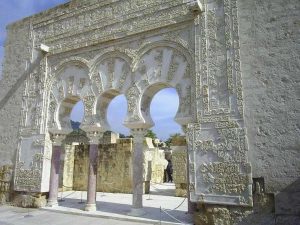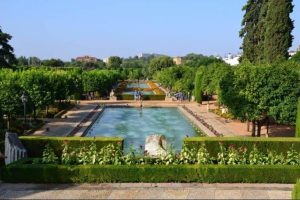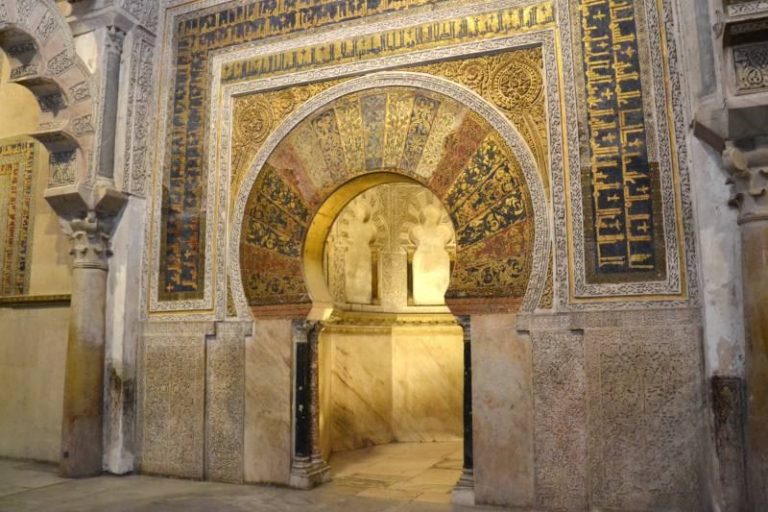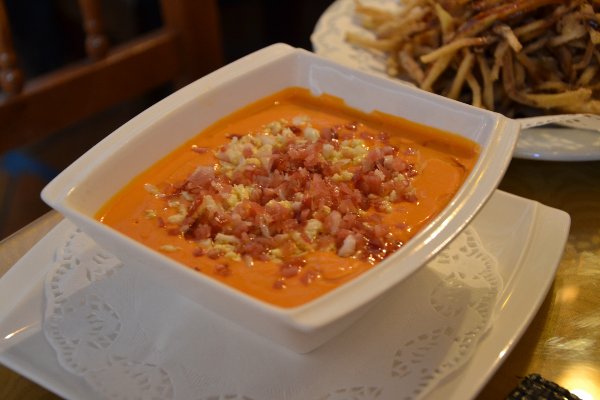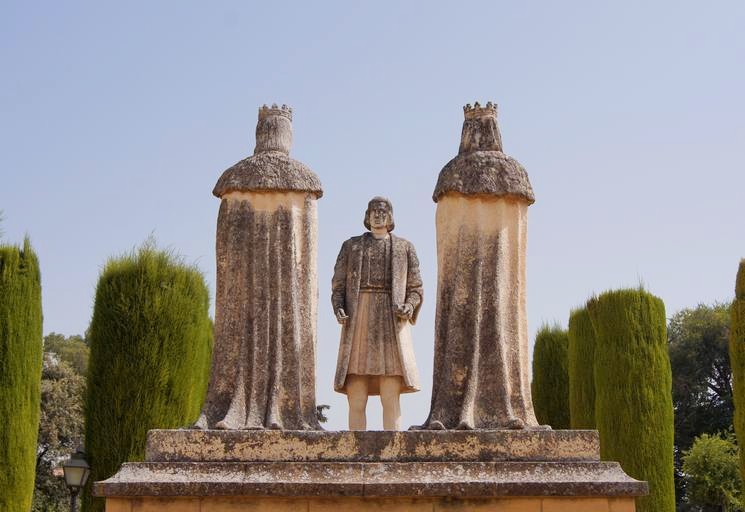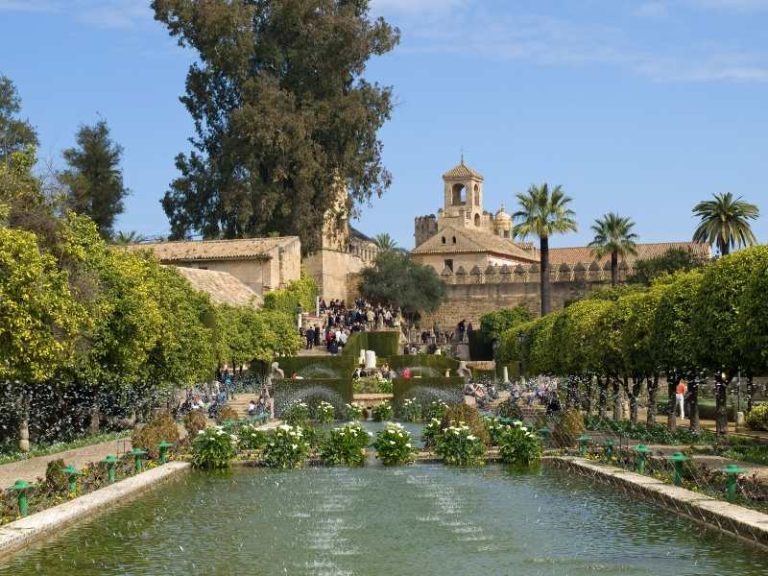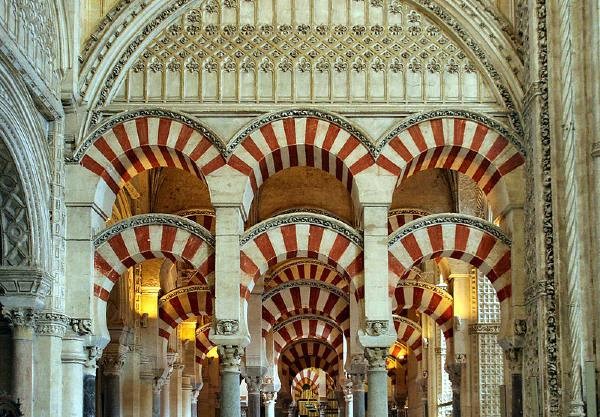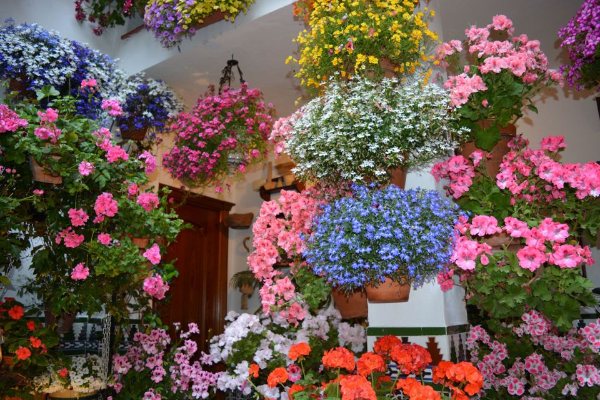
The Mosque of Cordoba
The Mosque – Cathedral of Cordoba is, without doubt, one of the most amazing monuments in Europe. For obvious reasons, the Great Mosque of Cordoba is also highly appreciated by the entire Muslim world. In fact, according to a recent survey carried out by a well-known Spanish television network, the Mosque of Cordoba is among the 7 wonders of Spain.
However, the most interesting thing about visiting the Mosque-Cathedral of Cordoba is that admiring this building is like opening a book on the history of Spain. Two civilizations, Muslims and Christians, who left their legacy and enriched our past, not only in Andalusia but in all Spain.
Use this table of contents to navigate
Why to visit the Mosque of Cordoba?
Few places in the world surprise the visitor as much as the Mosque of Cordoba. Its forest of columns and the traditional shape of its arches have become an icon of Andalusian and Islamic culture. But this building is much more than an old mosque from the Middle Ages.
One of the things that makes this building special is the immense Renaissance cathedral built in the middle of the ancient mosque.
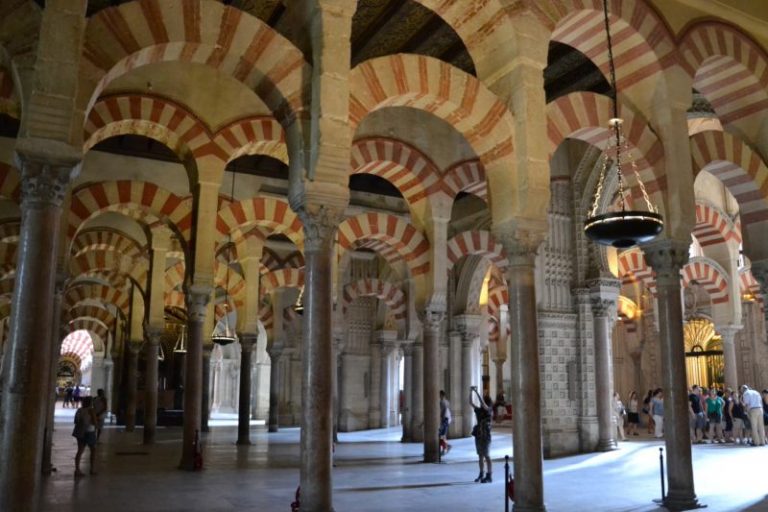
This symbiosis between Muslim and Christian art make it a unique building. A true gem that you cannot miss if you visit Spain. This is why more than a million tourists from all over the world visit this building every year.
The Mosque Cathedral of Cordoba in Figures:
– The first stone for the construction of the Great Mosque of Cordoba was laid in 756
-In 1523 a wonderful cathedral was erected inside the Mosque of Cordoba
– Total area: 23.400 m2 (2.518.755 ft2)
– 1300 onyx marble, jasper and granite columns
-850 pilars
– 365 arches
– The cathedral’s bell tower is 54 meters high (177 ft)
– The mosque cathedral has 25 access doors
The most beautiful masjid of Al-Andalus, the great mosque of Cordoba. pic.twitter.com/8ecS9nltby
— Al-Jayyani (@Alandlusii) May 20, 2021
Look Inside the Mosque of Cordoba
The Mosque of Cordoba is a huge building. For this reason, we recommend that you focus your attention on the most interesting parts.
Mihrab
The Mihrab (10th century) is a small niche located in the sacred wall (Qibla), which indicates the direction of the Kaaba in Mecca, and hence the direction that Muslims should face when praying. But surprisingly, the Mihrab in the Mosque of Cordoba is erroneously facing south and not toward Mecca.

Mihrabs can have different sizes, and given its important function are usually richly decorated. The Mihrab of the Mosque of Cordoba is octagonal and is adorned with marble baseboards and profuse decorative motifs, which reproduce symbols and allegories of life according to the Sassanid tradition.
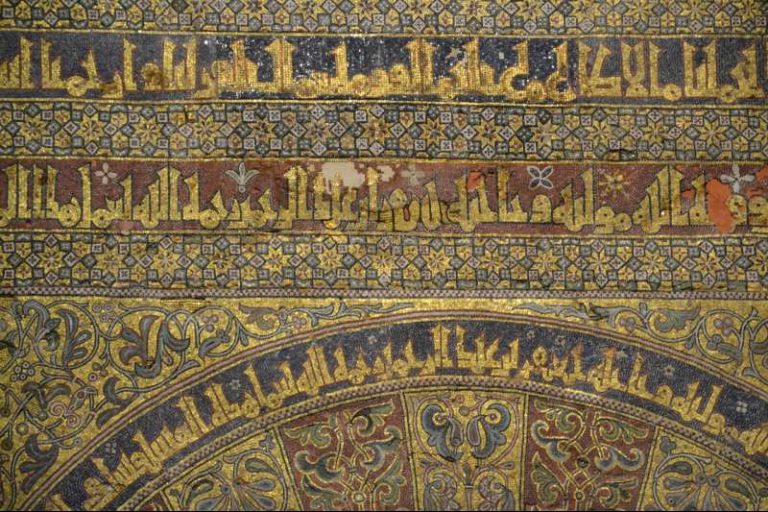
Bell Tower of the Cathedral
During the Muslim period, the current bell tower of the Cathedral was previously a minaret. When Christians conquered the city, they modified the old minaret and designed an impressive bell tower (1360).
Visitors can climb (there is no lift) to the highest part of the bell tower and enjoy the best views of the city. The cathedral’s bell tower is 40 meters (131 feet) high which makes it the tallest building in the city.
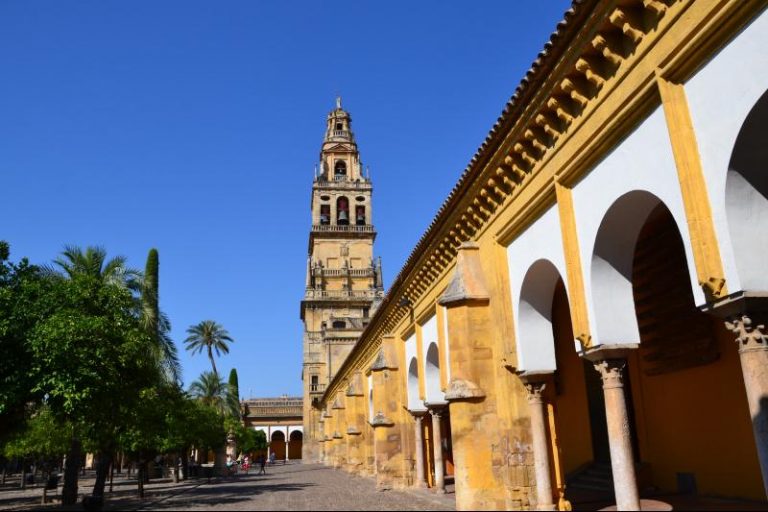
Prayer Hall of the Mosque of Cordoba
The most iconic part of the building is undoubtedly the prayer hall with its more than 1.000 columns and 300 arches. In the past hundreds of Muslim devotees filled this part of the mosque every day to pray.
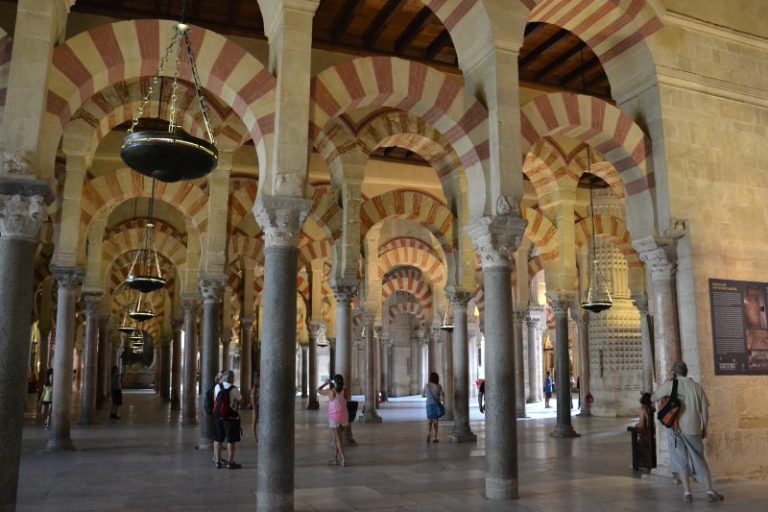
The Cathedral of Cordoba
Imagine walking through an endless forest of columns (hypostyle hall) and arches and, suddenly a huge cathedral emerges before your very eyes. This is precisely what makes this building so special.
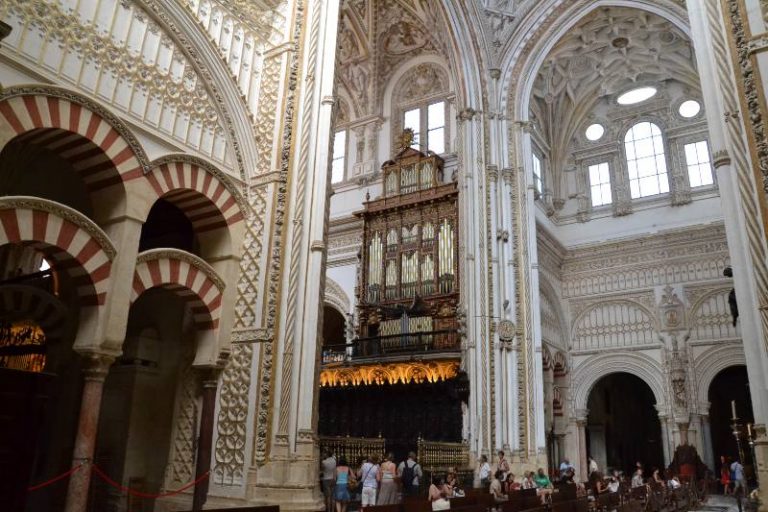
Since the arrival of Christians to Cordoba in 1236, the Great Mosque of Cordoba suffered a slow process of Christianization; small chapels were built, and Masses were celebrated every day. However, the biggest change took place in the 16th century when the Catholic Church was authorized to build a sumptuous Cathedral inside the old Mosque.
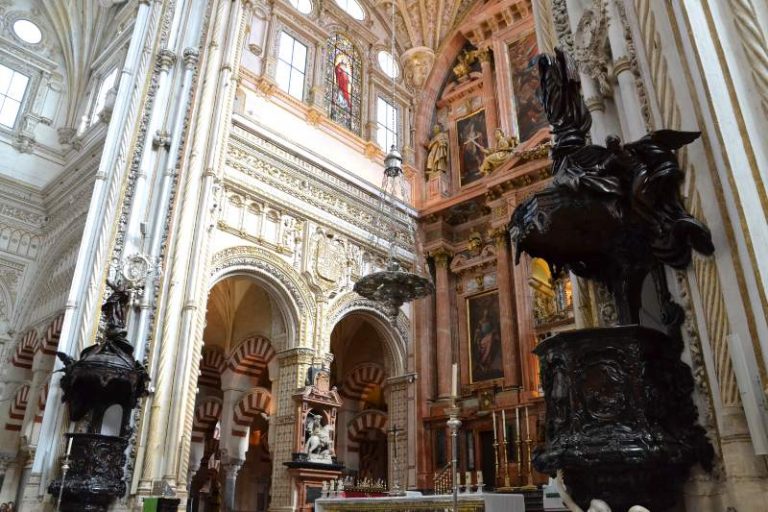
El Sagrario Chapel
This jaw-dropping chapel was built in 1586 and is located in the southeast corner of the building.
The entire chapel is decorated with beautiful frescoes that give to the chapel the nickname of “The Sistine Chapel of Andalusia.” These wonderful frescoes were designed by the Italian César Arbasia.
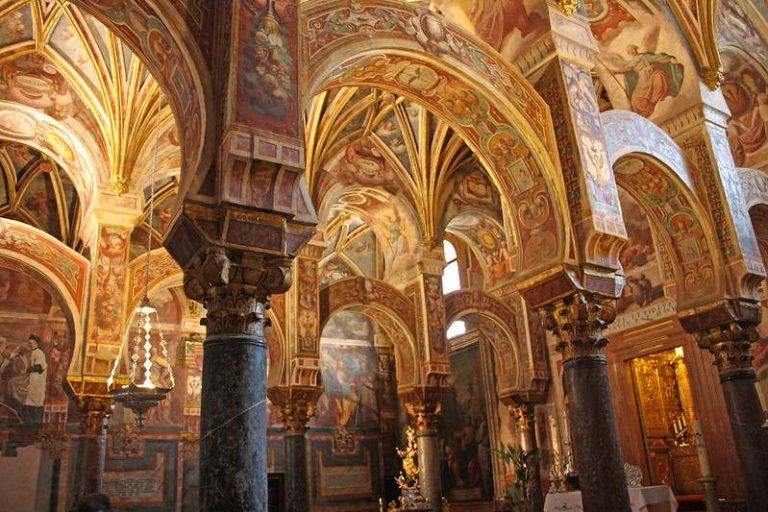
Orange Tree Courtyard
Orange Tree Courtyard, (“Patio de los Naranjos” in Spanish) was built to play a clearly religious role. Here the Muslims performed ablution before praying and entered the prayer hall clean from all their sins.
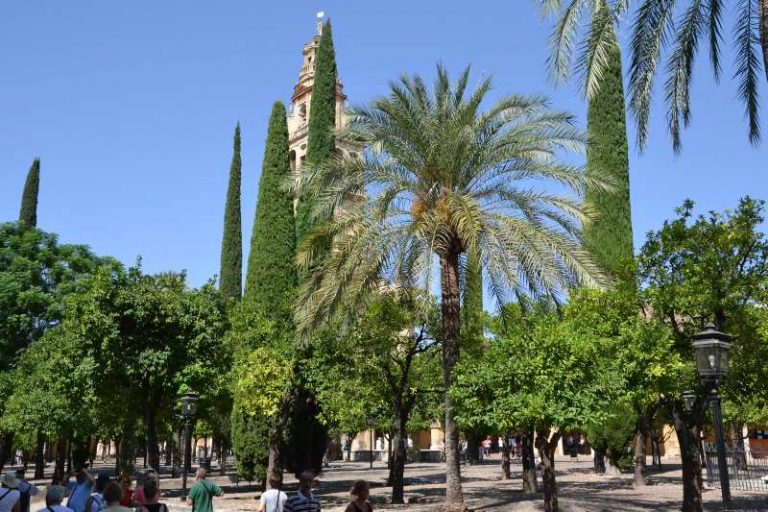
The Treasury of the Cathedral of Cordoba
The treasury of the Cathedral of Cordoba is located in the Chapel of Santa Teresa. This treasury includes beautiful reliquaries, gold chalices and candlesticks, silver trays and, of course, the “custody“, which measures over 2.5 meters and weighs 200 kilos. It symbolizes the construction of the Cathedral.
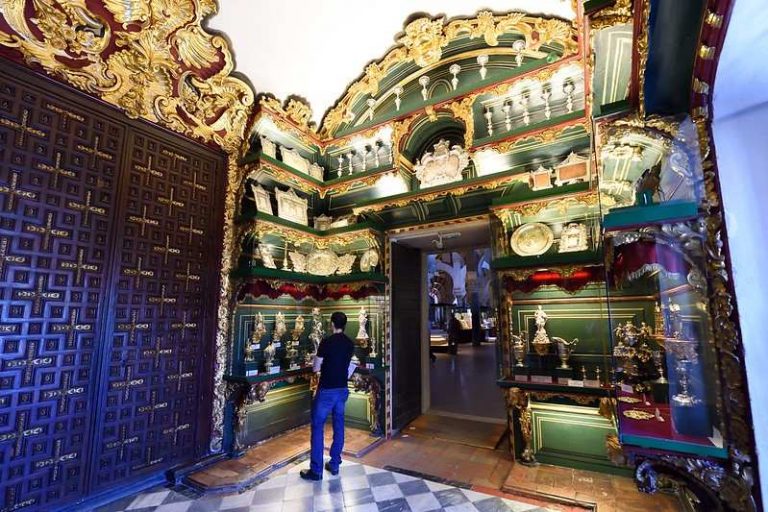
The history of the Great Mosque of Cordoba
The history of Cordoba could not be understood without the construction of the Mosque.
Shortly after the Muslim conquest of Spain in 711, Abderramán I arrived in Cordoba to create the Independent Emirate of Cordoba.
Masterpiece of medieval architecture in Spain
In this context, the construction of the Mosque of Cordoba began in the year 756. However, to erect his long-awaited mosque Abderraman I had to destroy an ancient Visigothic Basilica before. Obviously, the demolition of the Visigothic temple did not please the Christian citizens of the city.
During the following centuries Cordoba was gaining political relevance (the Caliphate of Cordoba was declared in 929), and the Mosque of Cordoba underwent numerous reforms. The city increased its population and the temple had to be enlarged several times.
The most important reform of the building was carried out by the Caliph Alhaken II between 962-965. Alhaken II extended the length of the naves, demolished the qibla wall (holy part of the mosque that is facing Mecca) and built a new one which is still preserved.
The current Mihrab (semicircular niche in the qibla wall) was also built by Alhaken II and is considered a symbol of splendor and magnificence of the Caliphate of Cordoba.
To improve lighting, four skylights were designed. By the way, unlike today, during these years, the floor of the Mosque consisted of compacted clay and was covered with precious Eastern carpets.
The last major reform carried out was at the end of the 10th century. The Caliph Al-Mansur built eight new naves, nearly doubling the capacity of the Mosque (22,000 m2)
A Cathedral inside a Mosque
On June 29th 1236, the Christian King Fernando III and his troops conquered Cordoba and entered the city. The procession headed to the Mosque where they placed the Christian Cross and a flag of Castile and Leon on the minaret. The news of the Christian conquest of Cordoba shocked the entire European continent, creating great expectation in the Christian European states.
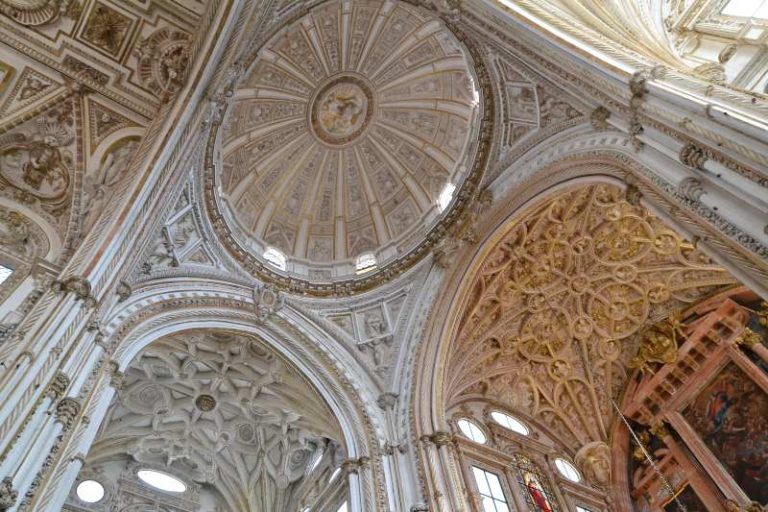
During the first Christian centuries, reforms in the Mosque were limited to the construction of small chapels which did not affect the Islamic building too much.
Over the years, the political situation in Cordoba was much more stable and clashes between Christians and Arabs slowly disappeared. This situation made it possible to design major reforms.
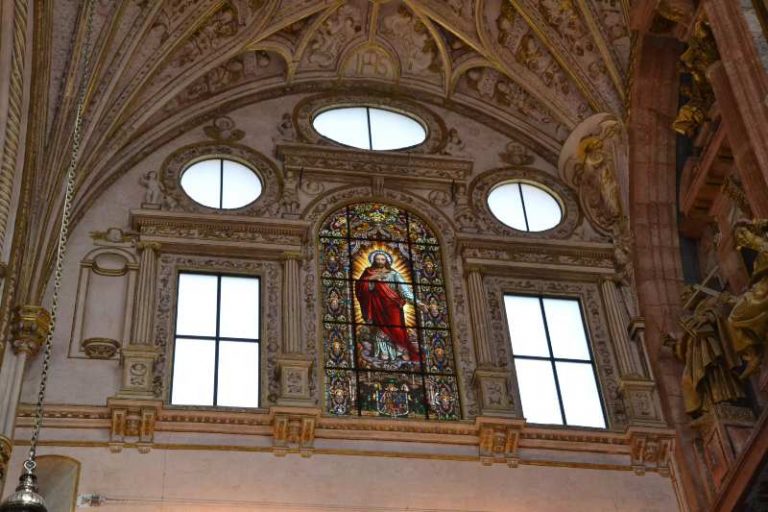
The biggest change that the Great Mosque experienced was carried out in the 16th century: King Carlos I authorized the construction of a great Christian Cathedral inside the Mosque (1523) at the initiative of Bishop Alonso Manrique. The Christian Cathedral resulting is a harmonious blend of different styles: Gothic, Renaissance, Mannerist and Baroque.
After this major reform (16th century), the building hardly underwent any change. Only minor additions and decorative liturgical accessories were attached.
Legends and stories about the Mosque of Cordoba
The Great Mosque of Cordoba, with more than 1.000 years of history, hides many mysterious legends and fascinating stories. Nowadays it is difficult to know whether these stories and legends are reality or fantasy as they are intermingled.
Apparition of an Angel
According to this legend, the Emir Abderraman I had a terrible nightmare in which he was drowning in a sea of blood while he recalled bloody episodes of his life. Suddenly, an angel appeared and rescued him. The angel said: “Such will be the work I consecrate you, the one true God, that the whole world will envy it and it will tame the winds and endure the endless days!”. After this prophecy Abderraman I ordered the construction of the Mosque.
Sabat
In large Muslim cities was common, for security reasons, to construct an overpass (Sabat) which directly connected the residence of the Caliph with the mosque. This overpass was particularly important as some Caliphs or important government Emirs had been killed before on their way to the mosque.
Thanks to this overpass they could cross the street safely and with discretion. Unfortunately, the original overpass of the Mosque of Cordoba was destroyed, and experts discuss about its original location. According to the most solid theories, Sabat was located on Torrijos Street, near the monument to San Rafael.
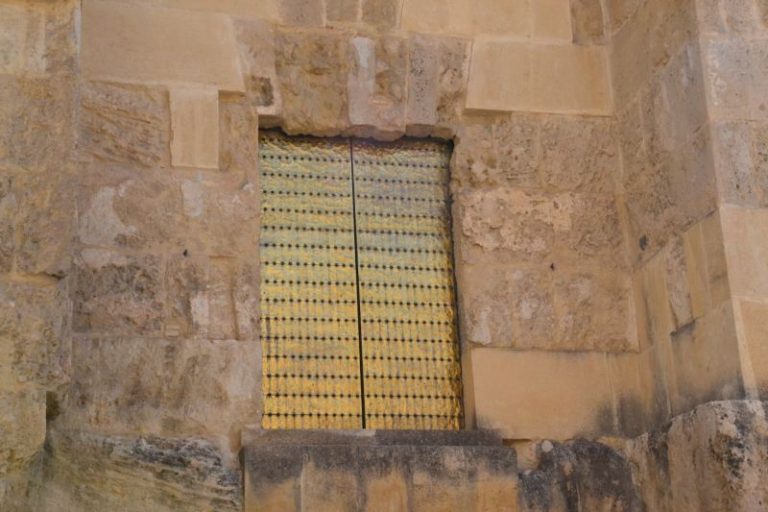
Tunnel between the Mosque and Medina Azahara
It is said that during the reign of Abderraman III there was a tunnel which connected the Mosque of Cordoba and Medina Azahara. Researchers had been looking for this tunnel with keen interest but no result till date.
This tunnel would have nearly 13 km (8 miles) of distance and would allow the Caliph pass through town without being seen and without fear of any possible attack. We must take into consideration that the safety of the Caliph was a matter of state, therefore it wouldn´t be strange the construction of an infrastructure of such magnitude
Bells of the Cathedral of Santiago de Compostela
During the Muslim rule numerous military campaigns were carried out against the Christian kingdoms of the north. Muslims razed villages, burned churches and wreaked havoc on the Christian population. In this context, on July 3 997, there was a battle between the Christian armies and the Muslim troops which ended in victory for Muslims.
According to the legend, the Caliph of Cordoba took as loot the bells of the majestic Santiago de Compostela Cathedral (North Spain) and placed them in the Mosque of Cordoba. When the Christians conquered Cordoba in the 13th century, the bells were returned to their original place.
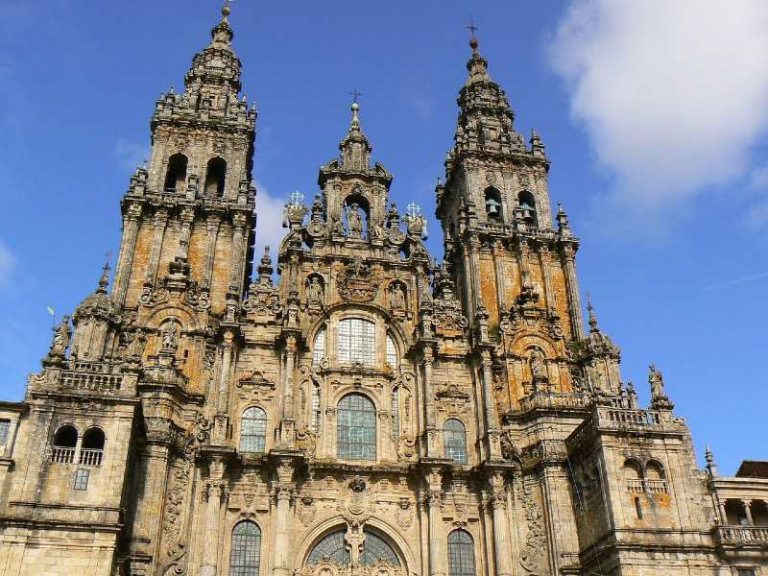
The repentance of King Charles I
When King Carlos V visited the works of the Cathedral in the 16th century, he was deeply repentant and said: “I did not know that the Mosque of Cordoba was so beautiful. We have destroyed something unique to build something that could have been built elsewhere“.
Useful information
Address:
Calle Cardenal Herrero, 1
Opening Hours Mezquita of Cordoba
Mon - Sat: 10:00- 18:00
Sun and bank holidays: 8:30am to 11:30am and from 3:30pm to 6pm
ATTENTION! If you want to visit the Mosque-Cathedral of Cordoba on Sunday morning (from 8:30am to 9:30am) you will have to wear shirt with sleeves or something to cover your shoulders as the Christian mass is held in the Cathedral. In addition, you can visit only the Christian part of the Mosque. The rest of the building is closed to tourists. Therefore, if you want to visit the whole building you will have to wait until the afternoon (from 3:30pm to 6pm).
Tickets Cathedral of Cordoba
• General: 11€
• Children under the age of 10: free entrance.
• Children from 10 to 14 years of age: 6€
• Children between the ages of 10 and 14 that are members of large families: 4€
• People over the age of 65, students between the ages of 15 and 26 and holders of the “European Youth Card”: 9€
• Ticket price for the bell tower: 2€
Built in:
8th century (Muslim period)
– Fortress of the Christian Monarchs: 650 meters (711 yards)
– La Corredera Square: 950 meters (1039 yards)
–Square of the Colt: 650 meters (711 yards)
-Las Tendillas Square: 700 meters (765,5 yards)
–Roman Bridge: 400 meters (437 yards)
–Caliphal Bath: 500 meters (547 yards)

